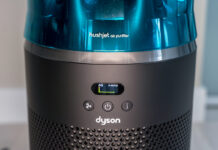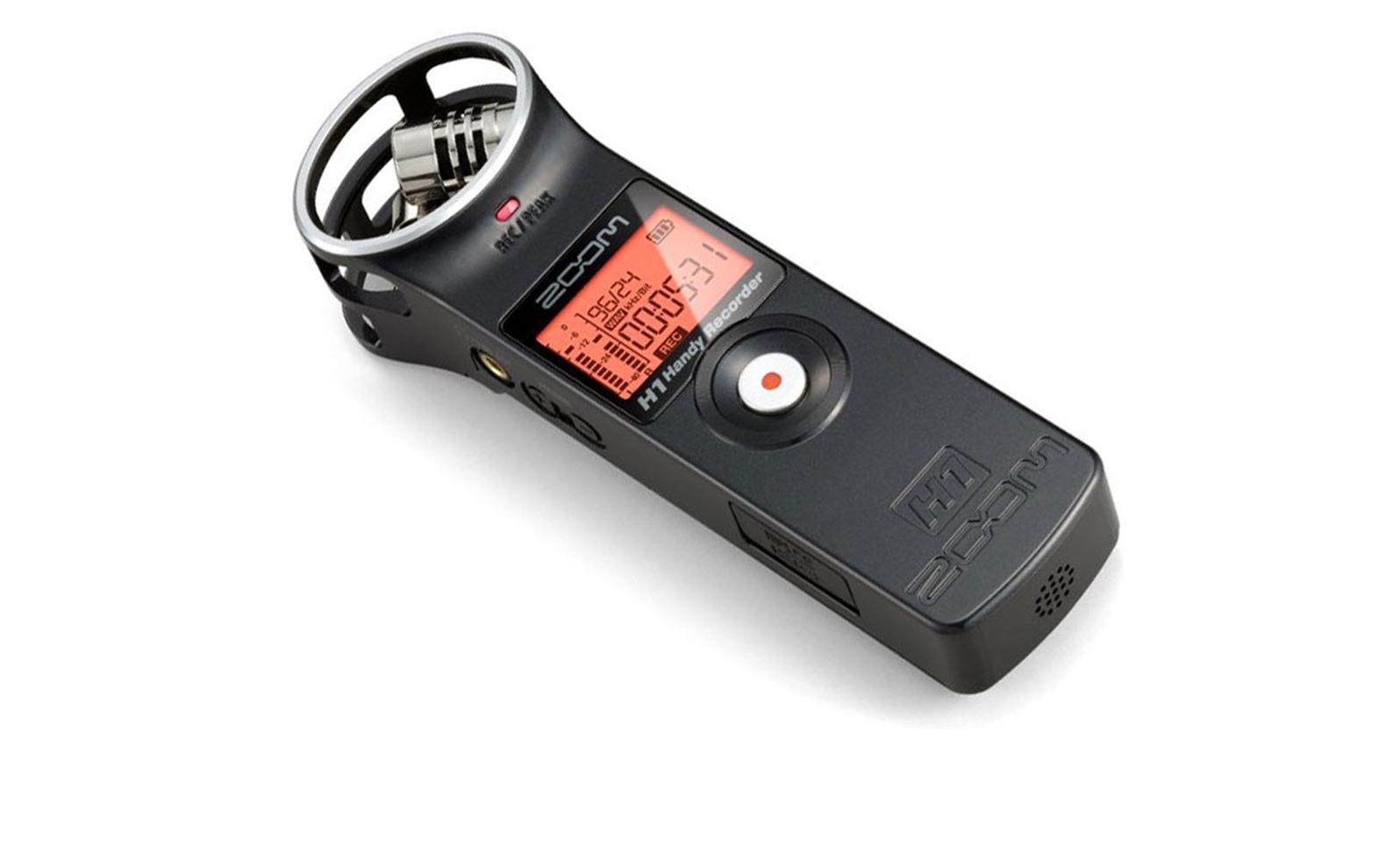 I got my first voice recorder when I was 9. Around that time, I’d decided that I wanted to be a journalist and for some reason, I decided that my 9th birthday was a good time to declare that and ask for a voice recorder. Shoutout to my aunt Pushpa (who I admit was like the “The Mailman” Karl Malone of birthday gifts in that she always delivered) who got me going in that regard.
I got my first voice recorder when I was 9. Around that time, I’d decided that I wanted to be a journalist and for some reason, I decided that my 9th birthday was a good time to declare that and ask for a voice recorder. Shoutout to my aunt Pushpa (who I admit was like the “The Mailman” Karl Malone of birthday gifts in that she always delivered) who got me going in that regard.
That first voice recorder was a Sony model with one of those little microcassettes and was the coolest thing in the world to 9 year old me. 5 years later, I got my first digital recorder but I had no idea how it really worked. It was battery operated, you couldn’t record for long and the audio wasn’t the greatest. There also wasn’t really any way to export the audio to a computer. USB was new to market at the time and connecting an audio recorder to a computer was still a year or two away.
Since those days, I’ve finished broadcasting school but never went into the field and never really had need for a voice recorder. Recently, I’ve needed one more and more though. As I’ve been building a voice acting profile and recording more and more videos for Best Buy, the idea of a voice recorder has been on my mind again. This need led me to the H1 Pocket Recorder by Zoom. Not only does it put a spin on the traditional voice recorder, but it comes jam packed with more features than just a start and stop button.
Lots of features in a tiny box
The thing I like the most about the H1 is that it’s jam packed with features. This is the calling card of this amazing little pocket recorder and turns the ordinary into extraordinary.
From the mome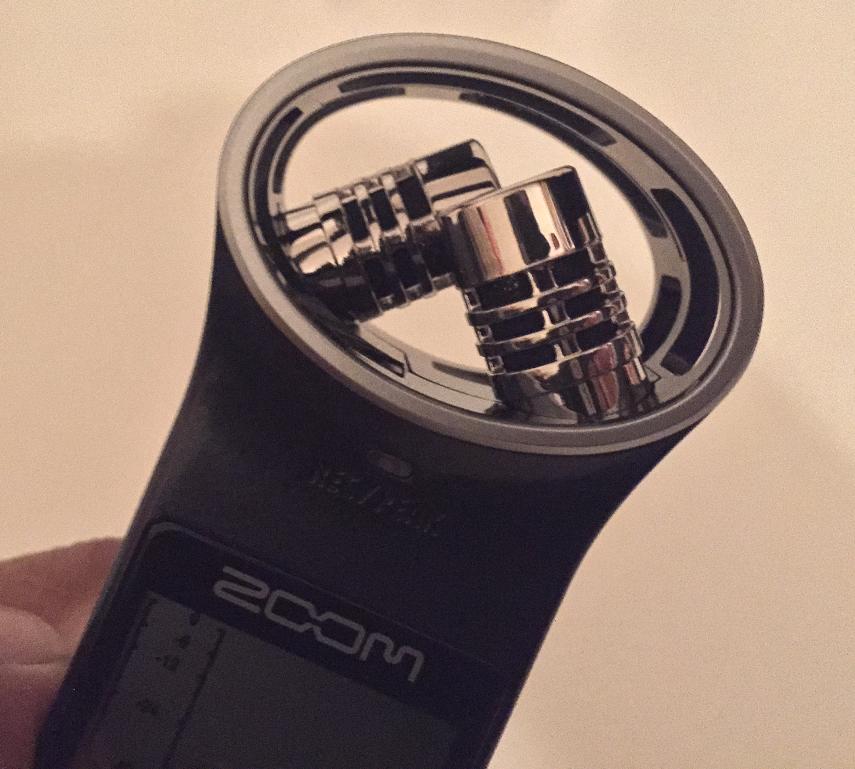 nt you open the box, you’re greeted with two microphones laid out in a criss-cross X/Y formation. This allows the recorder to capture you in clear stereo sound. Line In and Line Out ports allow you to listen in through headphones as well as import additional sound or music into your recordings. Auto leveling gives your recordings a bit of cleanup while you speak. If you have a particularly loud voice like mine, this works in your favor, especially if you find yourself trying to speak closely to the microphones. Since the mics are visible on the exterior and not shielded, you could run into distortion if you’re speaking too loudly and too closely to them.
nt you open the box, you’re greeted with two microphones laid out in a criss-cross X/Y formation. This allows the recorder to capture you in clear stereo sound. Line In and Line Out ports allow you to listen in through headphones as well as import additional sound or music into your recordings. Auto leveling gives your recordings a bit of cleanup while you speak. If you have a particularly loud voice like mine, this works in your favor, especially if you find yourself trying to speak closely to the microphones. Since the mics are visible on the exterior and not shielded, you could run into distortion if you’re speaking too loudly and too closely to them.
Perhaps the most important part of your recording experience (and privacy) is that the power switch needs to be slid and held to turn the device on. This means that you can carry the H1 in your pocket without worry of it accidentally starting to record. Perhaps more importantly is the fact that if you’re accidentally jostled and stop recording, the device won’t power off until you’ve slid the switch and held it again. You can pick up on, or start your recordings with the push of the button up front. The LCD display is a simple one but it plays back levels for you.
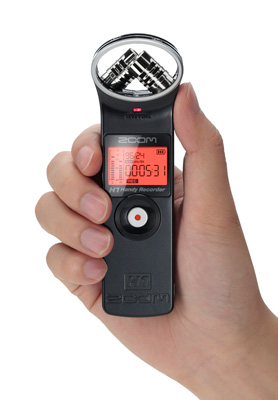 If you’re worried about recording formats as well, don’t be. With a couple quick clicks, you can swap from wav to mp3 format. Recording options are dynamic as well with the ability to record from 48 through to 320 kbps. Since the H1 is capable of running up to 10 hours on a single AA battery, you’ll never have to carry more than one or two spares depending on how long you’re planning on being away from home.
If you’re worried about recording formats as well, don’t be. With a couple quick clicks, you can swap from wav to mp3 format. Recording options are dynamic as well with the ability to record from 48 through to 320 kbps. Since the H1 is capable of running up to 10 hours on a single AA battery, you’ll never have to carry more than one or two spares depending on how long you’re planning on being away from home.
Lastly, I’d spoken about poor storage capabilities from my first digital recorder. The H1 works solely off micro SD storage. The package comes equipped with a 2 GB card which in its default setting (wav format) will hold over 200 minutes of recording alone. However, you can purchase and add up to a 32 GB card.
Overall, the H1 is really simple to use. You don’t really need instructions out of the box though they’re there. There is no assembly required and most of the features are self explanatory, especially if you’ve ever used a pocket recorder before. You can export your files to your computer with a Micro USB connection and do immediate playback with the speakers below. Here’s a quick visual of some of those options available on the right side of the recorder.

When doing the digital playback, however, be aware that if you press play and don’t physically stop playback once your desired listen is done, it will move onto whatever else is in sequence in storage. You know, just in case you recorded yourself singing along to something that you didn’t want heard in public, right? Not speaking from experience by the way…
I don’t really have a lot of issues with the H1. It would have been nice if the packaging came with a sponge sleeve or makeshift cover to go over the microphone casing itself for the purpose of keeping dust out. It could also deal as a very entry level pop filter. However, as you’ll see, a pop filter/windscreen IS available.
Pick up the Accessory Pack too
You’ll notice that I haven’t spoken much about cables, stands, etc when it comes to the H1 by Zoom. Realistically, it doesn’t come with much out of the box outside of the recorder itself, a battery and the Micro SD card. That’s all you need for casual recording. However, if you are a bit more serious and need more tools at your disposal, an accessory pack is available specifically for this recorder.
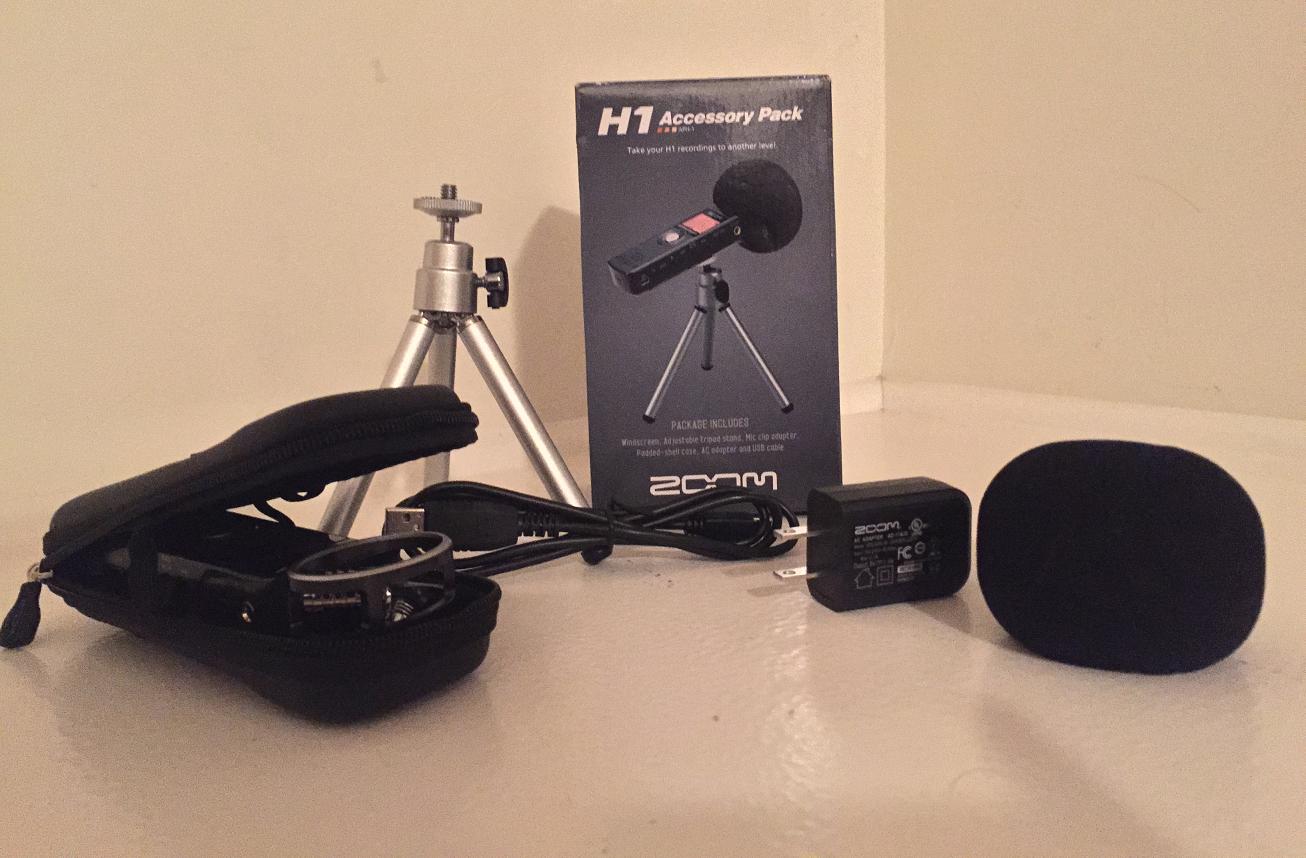
In it, you’ll find helpful tools like an AC Adaptor, a tripod, a micro USB cable, and most importantly in my opinion, a recorder sized pop filter/windscreen. If you’ve never used a windscreen before, it’s meant to reduce the natural noises your mouth makes during some of the popping sounds you make when you speak. If you ever watch your voice back during a recording in programs like Adobe Audition or Audacity, you’ll notice peaks especially when you drop the letter P, along with a “pop” or distortion. Having a windscreen in front of your recordings can help negate that popping sensation. If you ever watch my review videos, you’ll hear the difference between this
But can’t I just use my phone?
Sure you could use your phone but the audio quality won’t really be that great. If you look typically at a lot of single channel recording devices or even those that tried to onboard recording features (ranging from mono tape recorders to even the long forgotten Blackberry Playbook,) they work but they’re not great. Having a dedicated recording device like this one (especially with the cardioid shaped stereo input) makes your audio go from passable phone quality to something better. Coming into this review as somebody who uses his voice for a living, I’ve tinkered a lot with different recording devices and I assure you that even minor quality drops are noticeable and that you need the right tools for crystal clear recording. I don’t use built-in microphones on headsets to do voiceovers because of the strange and often unclear audio quality you get in return. It’s really hard to clean up audio when it’s so dirty that most basic tools can’t clean them.
If you take that analogy into the difference between phone quality recordings and something like the H1, it’s night and day. This is what you should be using to record interviews, speeches, lectures and more.
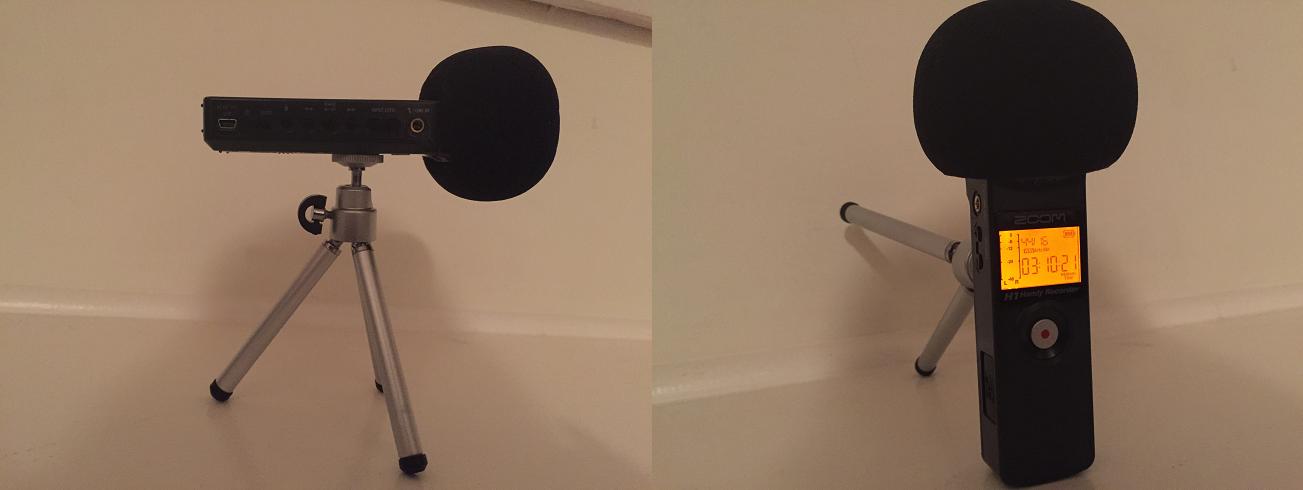
Whether you’re a journalist, a voice actor or you just need something for your day to day life, this is the type of investment you should make in yourself. Not only are you getting a high quality and amazing recorder, but with all of the features the H1 has, you can tinker and perfect everything to your heart’s content. Great battery life and flexible data storage are two very important things out in our fields. Having to worry about carrying tons of batteries or memory cards have plagued us for years in addition to the quality of playback and recording. The H1 solves all of those problems and answers other questions we would’ve had in the future (like the idea of windscreens or stands.)
The fabulous Zoom H1 pocket recorder will soon be available at BestBuy.ca



